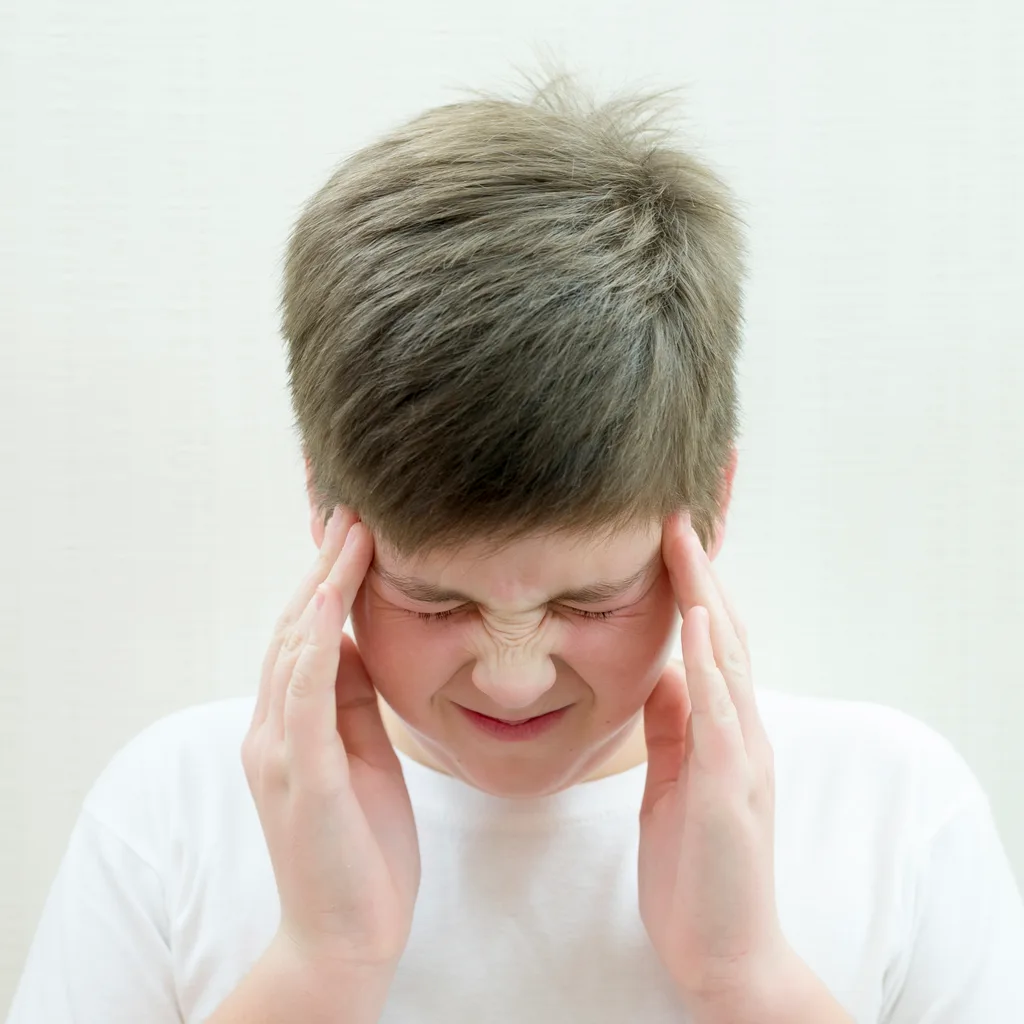Children and Adolescents
Did You Know?
– 12–15% of children experience sleep disturbances — with snoring being the most common.
– 6–12% of children show symptoms of TMD (jaw pain, muscle soreness, or bruxism).
– 25–50% of children with TMD also report primary headaches.
– Behavioral issues like hyperactivity, poor focus, or school struggles may be early signs of poor sleep.
– There is growing evidence of overlap between TMD, sleep-breathing disorders, and
headaches — often in two- or three-way comorbidity
Sleep Breathing Disorders in Children
Children are particularly vulnerable to Obstructive Sleep Apnea (OSA). Key risk factors include anatomical, postural, and environmental contributors.
Anatomical Factors
– Enlarged tonsils or adenoids (most common cause)
– Small jaw, high-arched palate, midface underdevelopment
– Obesity (fat around the neck narrows the airway)
Postural & Functional Factors
– Forward neck posture
– Open-mouth breathing linked to airway collapse during sleep
Environmental & Allergic Factors
– Chronic allergies or asthma
– Upper respiratory infections
– Exposure to secondhand smoke

Signs of Poor Sleep Quality
– Snoring or noisy breathing during sleep
– Bedwetting or night sweats
– Morning headaches or daytime fatigue
– Difficulty concentrating or poor school performance
– Behavioral concerns such as hyperactivity or irritability
Temporomandibular Disorders (TMD)
Temporomandibular joint disorders may manifest in children through pain, restricted jaw movement, or muscle soreness.
TMD in children can be associated with sleep disturbances and postural imbalances.
Headaches in Children
Primary headaches, including tension-type and migraines, may coexist with sleep-disordered breathing and TMD. Children
with two or more of these conditions should be evaluated with a multidisciplinary lens.
What Parents Should Watch For
Parents are often the first to notice symptoms. It’s important to track:
– Nighttime breathing patterns
– Jaw function or complaints of pain
– Headaches and attention challenges
– Posture and mouth-breathing habits

Diagnosis & Management
Children suspected of having airway or TMJ-related issues may benefit from:
1. Airway assessment and orthodontic guidance
2. Oral appliance therapy (when appropriate)
3. Medical referrals for sleep study or ENT evaluation
4. Allergy management and weight support (if relevant)
Why Early Diagnosis Matters
Unaddressed airway and TMJ issues can affect growth, learning, and long-term craniofacial development. Early intervention supports better outcomes for sleep, behavior, posture, and quality of life. Ready to explore your child’s needs? Book a consultation today to begin the path to relief andhealthier development.

